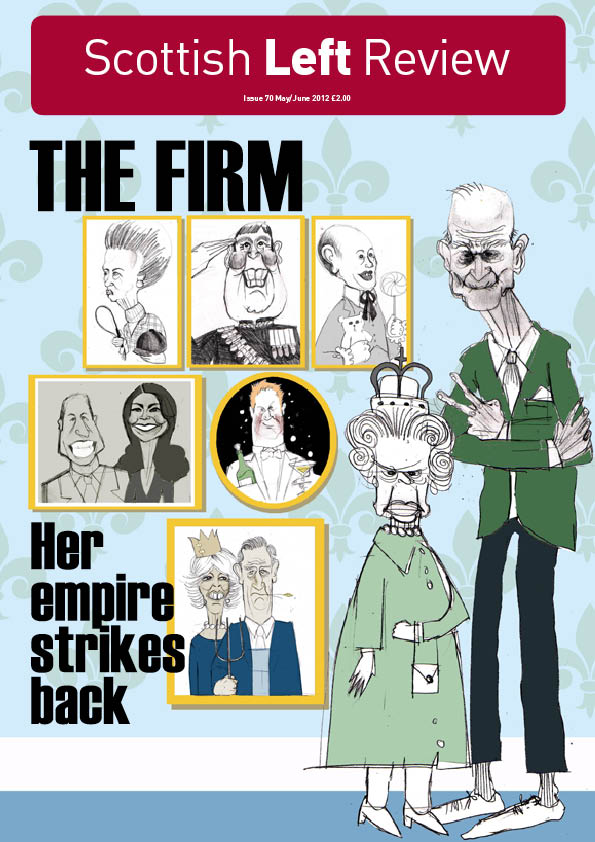Kick Up The Tabloids
Minimum Price for Hand Sanitiser Loophole Freakout
So, the battle lines are drawn, we’ve heard both sets of argument. It’s now time for the Referendum. In about another two years’ time.
The ‘Yes’ campaign, imaginatively titled Yes Scotland, launched a few weeks ago with movie star supporters and showbiz razzamatazz. Proud Scottish A-listers lending their support for independence included Brian Cox (a Scottish actor living in Los Angeles), Alan Cumming (a Scottish actor living in New York) and Midge Ure (a Scottish musician living in the 1980s).
Meanwhile, the ‘No’ campaign, or Better Together was launched last week with, er, Alastair Darling, Johann Lamont and Ruth Davidson. Depressingly, by virtue of having once worked in the newsroom at BBC Scotland, Ruth Davidson is actually the nearest thing the ‘No’ campaign has to showbiz razzmatazz (unless, of course, you are one of the many thousands who confuse Johann Lamont for Susan Boyle). However, I can think of no more appropriate figurehead for the cause than ex-Chancellor Darling. I don’t know about anybody else, but my immediate response any time he appears on my TV is to shout “No ! No! NO! For pity’s sake, No!”
I suspect many members of the public are beginning to suffer from launch fatigue. While Yes Scotland and Better Together may have the highest profiles, a myriad of other groups are out there punting out their own visions of the future of Scotland.
These include the ‘Scottish Independence Forum’, ‘Devo Plus”, the ‘Independence, Mibbees Aye, Mibbees No’ campaign and a group calling itself ‘Forward for Scotland But Still Getting Eastenders on the Telly’. And while many of us are already committed to how they will vote in the Referendum, a sizeable proportion have yet to make up their minds. Indeed, the outcome of the referendum in a couple of years could hinge on booze. By this, I don’t mean people’s voting behaviour will depend upon whether or not they are sober at the time, but that alcohol could be a key election issue.
The Scottish Government has recently introduced its new Minimum Pricing of Alcohol law, with alcohol not allowed to be sold for less than fifty pence per unit. One unforeseen effect of this is that it will lead to people eventually realising what a unit actually is. If you were to ask a cross-section of the public to define a unit of alcohol, the chances are they would answer “A bottle of wine ? A case of vodka ? My local branch of Bargain Booze?” At present, the recommended limits for safe consumption of alcohol are fourteen units a week for women, twenty-one units a week for men, and thirty-five units per week for pre-op trans-sexuals, who are of course women trapped inside men’s bodies.
The danger with the fifty pence per unit law is the majority of Scottish males will regard this as akin to their five-a-day. They will se it as compulsory to spend at least £10.50 per week on alcohol. Let’s face it, some people will have spend £10.50 by the end of Monday lunchtime.
So, what are the implications for the referendum ? People may be more likely to vote no, since after independence it will presumably be more difficult to nip down to Carlisle for a cheap carry-out. Drinks most affected by the new law are those such as Tenant’s Super, Carlsberg Special Brew, cheap strong cider, drinks which are relatively inexpensive and comparatively high in alcohol. The kind of drinks favoured by al-fresco park-bench and bus stop imbibers. This is, effectively, a tax on teenagers and the homeless.
However, it may lead to a return to the drinking habits of simpler era. When I was young, anyone who could not afford to buy alcohol had to show a certain degree of invention, ingenuity and scientific knowledge. Hence, the popularity in the 1970s of methylated spirits, Bel-Air hair lacquer, after-shave and turpentine. While these may not be the tipple of choice for the alcoholic of today, there are certain products on the market which may appeal to our more discerning, sophisticated modern-day palate.
For example, anti-bacterial hand-spray has twice the alcoholic content of spirits such as vodka, gin and tequila. It currently retails in Boots the Chemist for ninety-nine pence for a 35 millilitre bottle, and in some other outlets will be substantially cheaper. Under the new law, a seventy centilitre bottle of supermarket value vodka will have a minimum price of £13.13, while thirty-five centilitre of hand-spray (ten thirty-five millilitre bottles) will contain the same amount of alcohol but will costs only £ 9.90.
We may soon have the cleanest alcoholics in Europe (on the inside at any rate). How long before we hear this request on the street: “Hey, pal, any chance you can lend us ninety-nine pence so I can buy a hand sanitiser ?”



